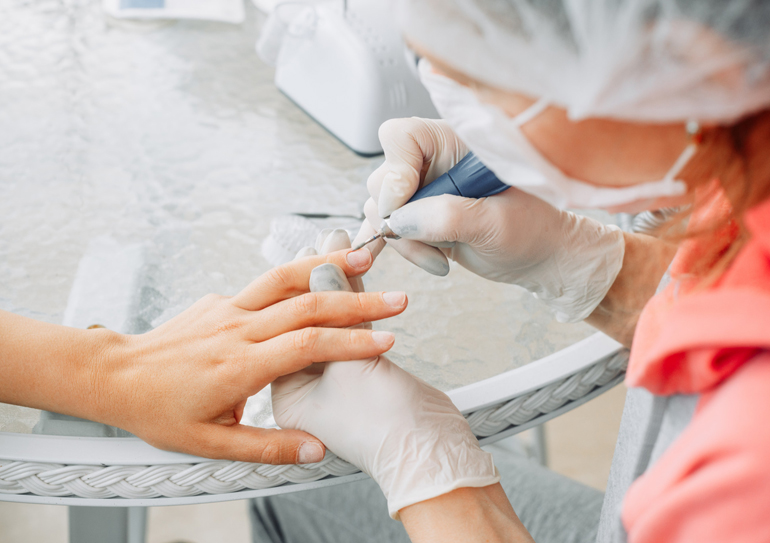Nail Treatments
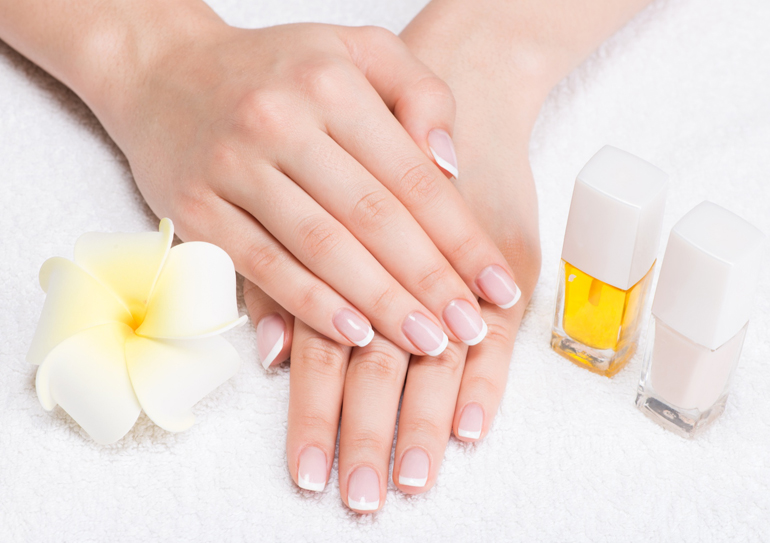
Nail Treatments
Improve the appearance of your nail
Nail disorders are often ignored because they are usually asymptomatic and may not hinder persons day to day activities. Please be informed that nails can serve as a window for diagnosing several skin and internal diseases, to quote a few as listed below
- Psoriasis
- Alopecia Areata
- Vitamin Deficiencies
- Liver Disorders
- Connective Tissue Diseases
- Bacterial, Viral and Fungal Infections etc
Hence kindly consult a dermatologist if you notice any longstanding changes in the colour, texture, shape of your nails or nail bed.
Nail disorders take time to respond requiring minimum of 3- 6 months for a clinical response.
Consultation charges : Rs 300 per visit. Valid for 10 days
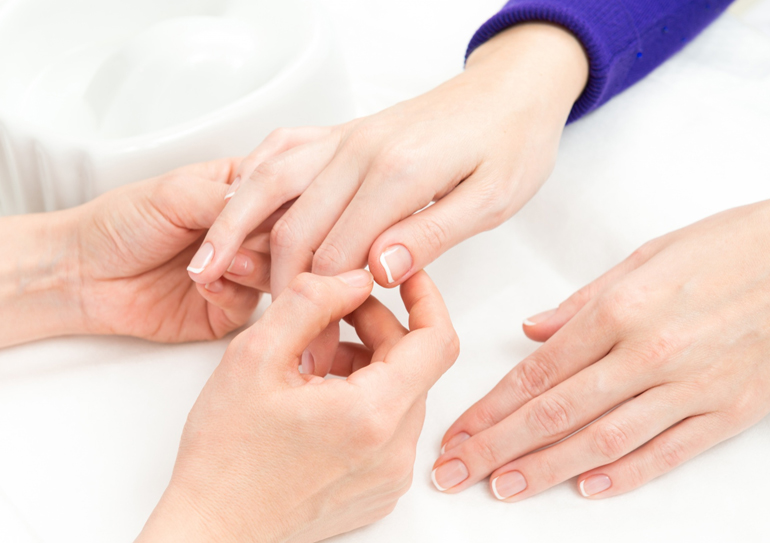
Onychomycosis
Onychomycosis, also known as nail fungus, is a common infection of the nail that can cause the nail to become discoloured, thickened, and brittle. It is caused by a fungus that grows under the nail plate. Onychomycosis can affect any nail, but it is most common on the toenails.
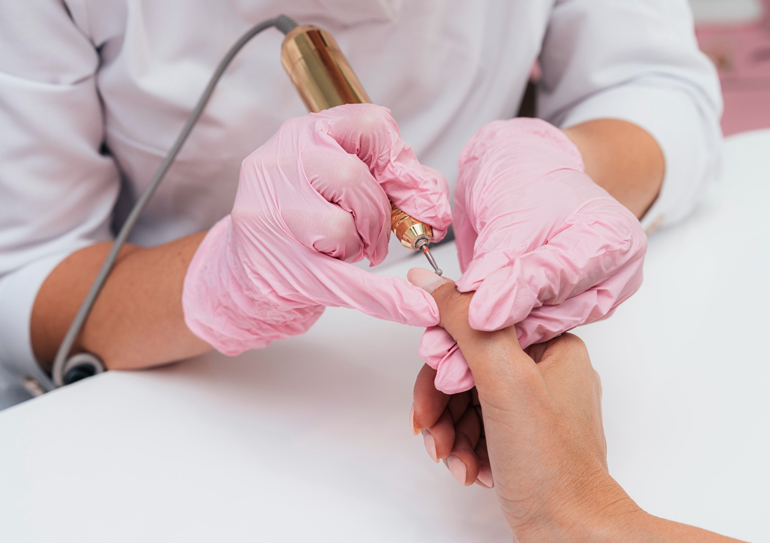
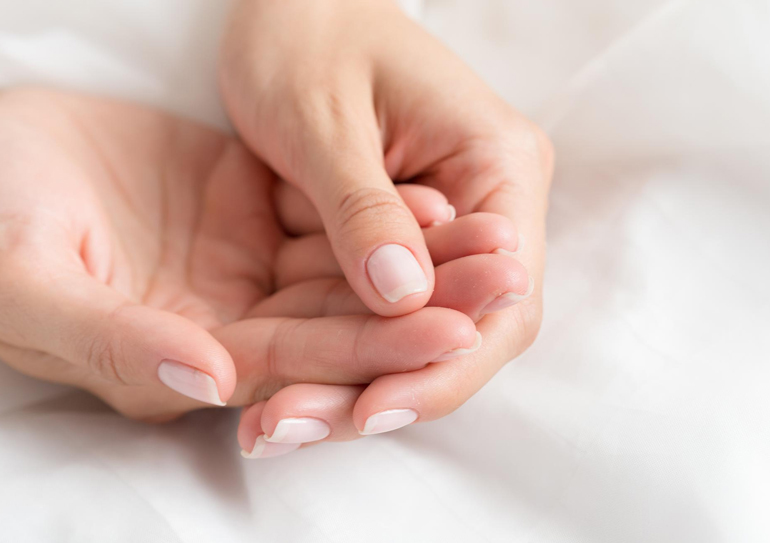
Onychocryptosis
Onychocryptosis also known as an ingrown toenail, is a common condition that occurs when the corner or side of the nail grows into the skin. This can cause pain, inflammation, and infection. Onychocryptosis is most common in the big toe. It can be caused by cutting the nails too short, wearing tight-fitting shoes, or nail deformities. If you think you may have onychocryptosis, it is important to see a doctor for diagnosis and treatment.
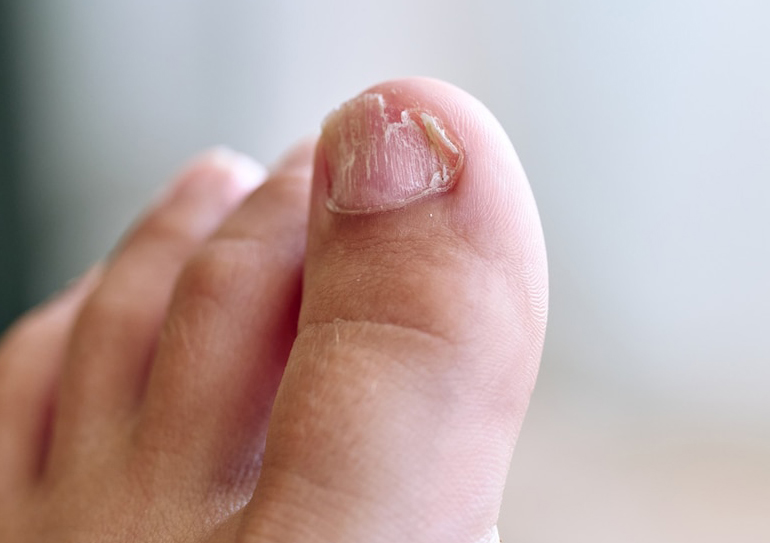
NAIL PSORIASIS
It is a common condition that affects the nails of people with psoriasis. It can cause a variety of changes to the nails, including pitting, thickening, discolouration, and separation from the nail bed. There is no cure for nail psoriasis, but there are treatments that can help to improve the appearance of the nails and reduce pain.
PARONYCHIA
Paronychia is an infection of the soft tissue around the nail. It is most common on the fingers, but it can also occur on the toes. Paronychia can be caused by a number of factors, including nail-biting, trauma to the nail, or fungal or bacterial infection.
The symptoms of paronychia include pain, redness, swelling, and pus. If you think you may have paronychia, it is important to see a doctor for diagnosis and treatment. Treatment for paronychia can vary depending on the severity of the infection.

MELANONYCHIA
Melanonychia is a condition in which the nail develops a brown or black band. It is a common condition, and it can be caused by a number of factors, including age, race, sun exposure, trauma, medications, nail psoriasis, and nail melanoma. In most cases, melanonychia is harmless. However, it is important to see a doctor if you have a dark band on your nail that is new, rapidly growing, or has other concerning features. A doctor can perform a biopsy to rule out nail melanoma, which is a type of skin cancer.
